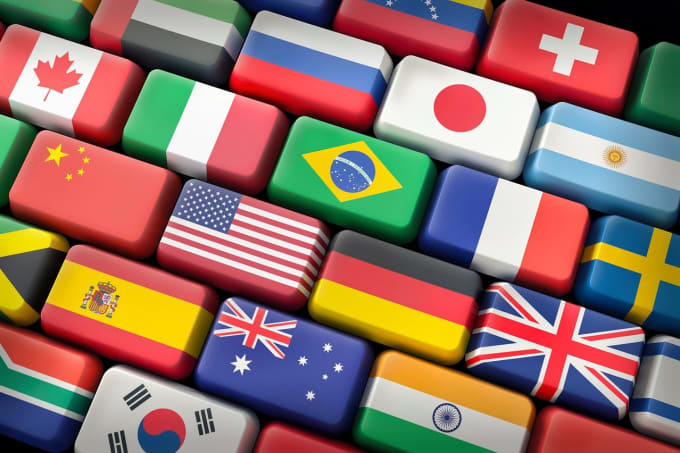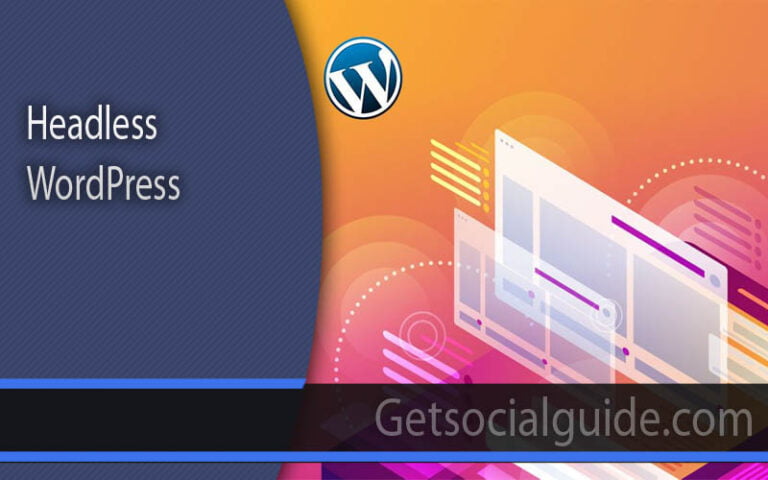Website Translation – Expanding Your Reach and Impact
Your website arguably serves as the primary resource customers turn to for insights about your business. While English functions as the international language of commerce, disregarding other languages is a missed opportunity. In an era where the Internet has transformed the world into a global community, localizing your content confers a competitive advantage over competitors. Among the popular languages are Spanish, French, Portuguese, German, Mandarin, Arabic, and Russian. A potent approach to creating a favorable initial impression involves translating your website into the preferred language of your target audience.
With the Internet’s role in globalizing society, people worldwide anticipate content in their native language, whether it’s Swedish, Spanish, Chinese, Japanese, Hungarian, or any language in between. Should you seek to venture into new markets that speak different languages, translating your website into the respective languages is imperative. This article will delve into the process of website translation and localization.
Benefits of Website Translation

Improved SEO: Having content in multiple languages allows you to target a broader range of keywords, giving you an advantage in organic search traffic. Search engines are more likely to direct users to the language version that aligns with their search intent. For instance, if a Mexican user searches, Google would likely prioritize the Spanish version of your website over the English one.
Higher Conversions: Statistics indicate that customers spend more time and money on websites presented in their native language. When users comprehensively understand your products and services, they are more likely to convert. A language they are comfortable with fosters trust and loyalty, leading to repeat customers. Effective website translation can enhance both the number of visitors and the conversion rates on your landing pages.
Enhanced Brand Image: To build a global brand, reaching out to non-English speakers is essential. Website translation is a cost-effective approach to increase brand awareness and market value.
Competitive Edge: Almost half of all internet users reside in Asia. Tapping into this lucrative market becomes accessible through culturally appropriate website translations. It can yield a potentially higher return on investment compared to mature and competitive English-speaking markets.
Improved User Experience: An appealing user interface alone is insufficient to maintain user engagement. In an era of abundant well-designed options, consumers have ample choices among English language websites. Customizing the language creates a sense of familiarity with your brand and broadens your user base. Ensuring an attractive and user-friendly UI in each target language is crucial.
Positive Results for Duplicate Content: While duplicate content can typically incur penalties from Google, multilingual websites benefit from it. The use of hreflang tag attributes allows Google to index multiple translations of your content without demoting it in search results. It improves traffic as Google accurately directs users to the appropriate version based on their region or language.
Staying Competitive: If competitors are already catering to online customers in their preferred language, translating your website becomes crucial to remain relevant in that market. Globalization has expanded consumer choices, and personalized experiences in preferred languages are now an expectation. Without offering localized, culturally relevant digital experiences, consumers are more inclined to choose your competitors.
Data-Driven Decision: Analyze your website analytics to identify traffic sources and user behavior. Detecting unexpected overseas interest in your brand can highlight untapped markets that may require multilingual websites. Translating your content can capitalize on this interest, propelling your growth.
Reaping SEO Benefits: Your website plays a vital role in your SEO strategy, influencing search engine rankings and organic traffic. Multilingual websites provide SEO advantages through content with optimized keywords for new international audiences. Additionally, a multilingual site showcases cultural sensitivity, resonating better with your target audience and setting you apart from competitors.
Incorporating website translation offers these multifaceted advantages, fostering growth and global reach for your business. If you need further insights, feel free to ask.
Different Types of Website Translations
Website translation isn’t a one-size-fits-all endeavor. The approach you adopt will hinge on your website type and specific global expansion objectives. Sometimes, you might even employ distinct methods for various pages on the same site. Here’s a concise overview of the four primary types of website translation:
Raw Machine Translation for Websites: This is the quickest and most budget-friendly option, though the least precise. Raw machine translation employs automated software (e.g., Google Translate) to translate website content into another language. While it serves as a useful starting point, it’s crucial to recognize that even advanced machine translation using neural networks isn’t as accurate as human translation. This method suits low-visibility or non-user-facing pages that don’t demand perfection, provided they convey the general meaning. User-generated content like comments and forum posts may fall into this category. However, there are substantial reasons to avoid relying solely on machine translation. It can’t discern cultural nuances, often leading to numerous mistranslations. While machine translation can expedite output, it may come at the cost of meaning loss, grammatical errors, inadequate localization, and perplexing statements. These issues adversely affect advertising, brand identity, and engagement-focused content. Such shortcomings not only diminish conversion rates and web traffic but also grant advantages to competitors. A negative initial impression can strongly incline a buyer toward an alternative company.
Translation Proxy for Websites: A translation proxy is an automated web-based solution that dynamically translates websites. It operates by displaying a translated version of your website in users’ language while you manage and update only one version. This proxy essentially overlays your website, intercepting visitors worldwide and offering them a real-time translated version of the site. The term “linguistic mirror” is sometimes used to describe a translation proxy due to its capacity to effortlessly reflect site content in multiple languages.
Machine Translation Post-Editing (MTPE) for Websites: MTPE, a more accurate form of machine translation, has gained popularity recently. In MTPE, machine-translated content is initially polished by a human translator. This approach suits websites with medium visibility, such as pages for potential customers that don’t necessarily require perfection, like product descriptions. The ISO 18587:2017 standard, published in 2017, outlines guidelines for selecting, training, and evaluating post-editors handling machine-translation output.
Human Translation for Websites: The most accurate but also the priciest and time-intensive option. Human translation involves having a professional translator, preferably a native speaker and subject-matter expert, translate website content. For high-visibility pages like the home page, key landing pages, and any page where potential customers formulate their initial impression of your brand, human translation is the ideal choice.
Internet Trends and Statistics Favor Multilingual Websites

While over 50% of websites are in English, it’s not the native language for the majority of internet users. Statistics reveal that most online shoppers prefer websites in their own language, leading to a competitive edge by offering language options. Websites that undertake website localization often experience noteworthy increases in visits, sales, revenue, conversions, and overall engagement. However, achieving such positive outcomes demands commitment from website owners. Beyond translation, effective localization entails considering context-specific nuances.
Website translation can yield a surge in visitors and heightened engagement from international markets.
For instance, British and American English, despite sharing the same language, differ in various aspects. An American accustomed to “gasoline,” “vacation,” and “hood” might not immediately relate to “petrol,” “holiday,” and “bonnet.” Similar considerations apply to Brazilian and European Portuguese, as well as Latin American and European Spanish. Acknowledging the impracticality of catering to every variation, thorough keyword research becomes crucial for international SEO success. It’s worth noting that while Google dominates the global search engine scene, it might not be the preferred choice in every country. Platforms like Baidu, Yandex, and Naver hold substantial market shares in China, Russia, and South Korea respectively. Thus, your efforts to attract visitors from these nations must account for disparities in online search behavior.
What should I consider when translating my website?
Importance of localization strategy
Before embarking on website translation, it’s imperative to formulate a comprehensive localization strategy. While “localization” and “translation” are often used interchangeably, they hold distinct meanings:
- Translation involves converting text from one language to another.
- Localization encompasses the adaptation of an entire product or all content from one language to another. This adaptation addresses both linguistic and cultural aspects.
Your localization strategy encompasses the overarching plan to adapt your offerings, messaging, and content to new markets and countries while staying true to your brand identity. It takes into account each market’s language, culture, and societal norms to determine the most effective way to convey your messages. These messages, disseminated through your website, application, social media, or marketing campaigns, resonate better with customers and potential clients wherever they are. Essentially, if you intend for your international visitors to find your information relevant, avoid misunderstandings (or worse, causing offense), and facilitate their purchasing decisions, localizing your web content is crucial. This is a key point to remember. The ultimate purpose of localization is not solely to appease your leadership or meet arbitrary goals. It’s about simplifying your customers’ experience, enhancing their understanding of your product, and facilitating their transactions.
Most teams organize their localization process using one of two approaches:
- Waterfall Localization: This method adds translations after the webpage is fully live.
- Agile Localization: For more intricate websites, agile localization synchronizes the localization process with website development. Both processes run concurrently, fostering efficiency and flexibility in your localization workflow. This approach is particularly valuable when frequent new updates need to be deployed. However, it can be more intricate and necessitate dedicated localization engineers.
Translation Goals and Objectives
At the outset of your website translation project, it’s essential to establish clear goals and objectives. In simpler terms, what are you aiming to achieve? Are you striving for specific metrics or benchmarks? Are you looking to translate every page or asset, or is focusing on key pages sufficient? As highlighted earlier, translation isn’t merely about implementation. We’ll delve further into this aspect in subsequent sections.
Translation Approach and Quality
Moving forward, what level of translation quality do you seek? You have the option to engage a professional linguist, a native speaker, or utilize a neural network (machine translation, as we’ll discuss later).
A proficient linguist who specializes in the target region can deliver exceptional work, taking into account cultural nuances. However, the associated cost might be substantial.
Enlisting a native speaker (potentially even an employee) could serve your purpose. Nonetheless, if the person lacks professional translation experience, conveying intricate messages accurately or recognizing linguistic subtleties might be challenging.
Machine translation offers cost-effectiveness and speed, but the resultant quality might not be optimal. Hence, a trade-off between quality and cost needs to be determined based on your requirements.
Transcreation Services
During website translation, you’ll likely require transcreation services. Transcreation blends translation, creation, and copywriting. It involves transforming an existing text to maintain the core message while incorporating culturally relevant references for the target market. The process doesn’t focus on word-for-word recreation but emphasizes intent and how the message resonates in the new market.
Localization for Physical Products
If your offering is a tangible product rather than software, specific considerations arise. When planning to introduce this physical product in a new market, you must address localization. For instance, products with controls, intricate manuals, and detailed specifications require translation. Specialized expertise is necessary to accurately convey technical terminology.
Legal Factors
Legal considerations are pivotal and can vary across countries and regions. For instance, if your business centers on gambling, additional research is needed to comprehend the regulatory landscape in the target area. The same applies to certain financial tools like cryptocurrencies, which have ambiguous status in many places, as well as items like cigarettes and alcohol. Different jurisdictions impose diverse regulations, such as alcohol sales age limits that range from 18 to 21.
Language Selection
Lastly, but significantly, decide which languages to translate your content into. While this might seem straightforward, it remains a critical decision. Further discussion on this topic will follow in subsequent sections.
Who will actually translate my website?
Your question is quite pertinent. Generally, there are two main approaches: using a Language Service Provider (LSP) or conducting in-house translation. An LSP, typically a translation agency, can handle nearly all aspects if you’re willing to cover the costs. They’ll evaluate your needs, assess your website’s current status, offer recommendations, and handle the translation. If your budget can accommodate the expenses, you’d rather not assemble a translation team, and you’re seeking experienced professionals, this is likely your best option. Numerous LSPs are available — you can refer to our blog post for insights into popular providers.
If you’re feeling more hands-on and want complete control over translation aspects, then in-house translation is the path for you. However, be aware that this is the DIY route. You’ll need to put together a translation team yourself and possibly make complex decisions.
If you opt for in-house translation and your company lacks the translation capacity, you’ll need to either hire new staff or find freelancers to assist. You’ll likely need to fill the following roles:
- Localization Engineer: This role is crucial. Localization engineers oversee the entire localization process, bridging gaps between engineering, project managers, vendors, and linguists to ensure your product functions seamlessly in each target language.
- Localization Project Manager: Another key role. An experienced project manager is ideal to avoid surprises. They execute the company’s localization strategy on a practical level, overseeing translation projects from start to finish.
- Translators: Obviously, you need translators for the job. Ideally, professional linguists with specialization in your chosen languages, though native speakers can suffice. Even if you’re using machine translation, human review is recommended, especially for high-visibility content. You can find translators through third-party companies (e.g., Gengo), freelancer platforms, or services like Lokalise.
- Localization Quality Assurance Tester: This role ensures things work smoothly from a localization perspective. Existing QA engineers could potentially handle this responsibility.
- Developers: If your website isn’t prepared for translation, developers need to implement internationalization, which might be complex. They also need to support the translation process throughout.
- Designers: If you’re localizing visuals, a designer is essential. Some visuals might need adjustments, while others might require complete remaking.
In-house translation grants you full control, with advantages and drawbacks. On one hand, you can achieve comprehensive results aligned with your needs. On the other, you’re responsible for overseeing the entire translation process. Getsocialguide can assist by facilitating project management, team collaboration, linguist hiring, quality assurance, automation, and integrations with third-party services and designer tools.
Can I use Google Translate machine translation on my entire website?
Many individuals inquire whether utilizing solutions like Google Translate can handle all their translation needs. To address this query, let’s briefly delve into the realm of machine translation. There are several machine translation solutions available, with Google Translate and DeepL being the most well-known. As the name suggests, machine translation (MT) involves algorithms to automatically perform translations, sidestepping the need for human specialists.
MT does offer some advantages: it’s exceptionally rapid, cost-effective, and accommodates numerous languages, including lesser-known ones. However, it’s essential to recognize the downsides. Firstly, translation quality might be suboptimal, especially for lengthy, intricate texts with specialized terms. Secondly, MT engines struggle to adeptly adapt slogans or jokes for specific target regions, making their translation through MT inadvisable. Thirdly, if your text contains complex formatting elements, MT could inadvertently disrupt them. Lastly, MT engines might have constraints concerning the length of translated text.
Considering these factors, the succinct response to the earlier question is: “In most scenarios, it’s not feasible.” However, there’s an additional facet: “You can still harness MT to significantly expedite the overall process.” Remember, MT is a tool that necessitates judicious employment. It’s inadequate to simply open Google Translate and proclaim, “Translate all my website content into five languages, then integrate it into my CMS!” At the very least, you’ll still need to extract the text for translation, provide it to the neural network for processing, verify the outcome (ideally with a linguist’s assistance), and subsequently re-import the text, ensuring proper formatting.
How much might translating my website cost and how long will it take?
The cost of translation can vary greatly depending on factors like language pair, content length, complexity, and the need for editing. Human translators generally charge around $0.22 per word on average, with variations depending on the languages involved.
For instance, translating a 2500-word article could cost around $550 at this rate. Some language pairs are more affordable, such as English to Spanish, while others like Japanese or Chinese might be more expensive. If editing is required, the cost can rise to around $0.30-$0.40 per word. The time it takes to translate also varies based on factors like text length and complexity. A standard 2500-word text might take 2-3 days to translate, while larger documents like user manuals with 30k-40k words could take up to a month.
Alternatively, neural network-based translation services are often priced around $0.001 per word or $20 per million characters. These systems provide quick turnaround times, often within minutes or even seconds. However, it’s important to note that such translations might still require professional review to ensure accuracy, which can take hours, days, or even weeks.
In both cases, the quality of the end result is crucial, so it’s important to balance speed with accuracy.
Benefits of Website Translation: Frequently Asked Questions
Q: How does website translation impact user engagement?
A: Website translation significantly improves user engagement by removing language barriers, allowing visitors to understand and connect with your content more effectively.
Q: Can website translation really lead to higher conversion rates?
A: Yes, localized content establishes a deeper connection with users, addressing their specific needs and concerns, resulting in improved conversion rates.
Q: Is website translation suitable for small businesses?
A: Absolutely. Website translation opens up new opportunities for small businesses to reach a global audience and compete on a larger scale.
Q: How does website translation contribute to SEO?
A: Localized content enhances SEO efforts by making your website more relevant to specific regions, leading to higher search engine rankings and increased organic traffic.
Q: Is automatic translation software as effective as professional translation services?
A: While automatic translation can provide a basic understanding, professional translation ensures accuracy, cultural sensitivity, and a natural flow of content.
Q: What industries can benefit the most from website translation?
A: Virtually every industry can benefit from website translation, particularly e-commerce, travel, hospitality, and online education.
Conclusion
Embracing the benefits of website translation is a strategic move that can elevate your business to new heights. By breaking down language barriers and creating a user-friendly experience, you can connect with a global audience and foster meaningful relationships. From increased engagement to improved conversion rates, the positive impact of website translation on your online presence cannot be overstated. So, unlock the doors to global expansion, enhance brand credibility, and reap the rewards of a truly interconnected world.



